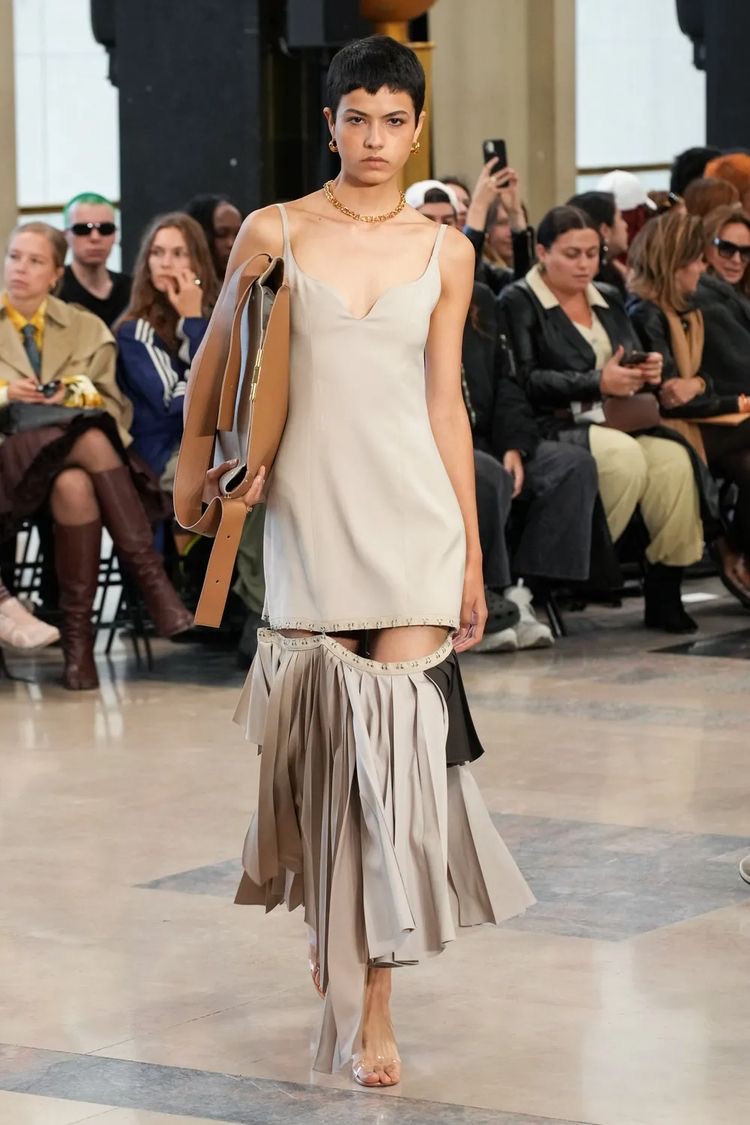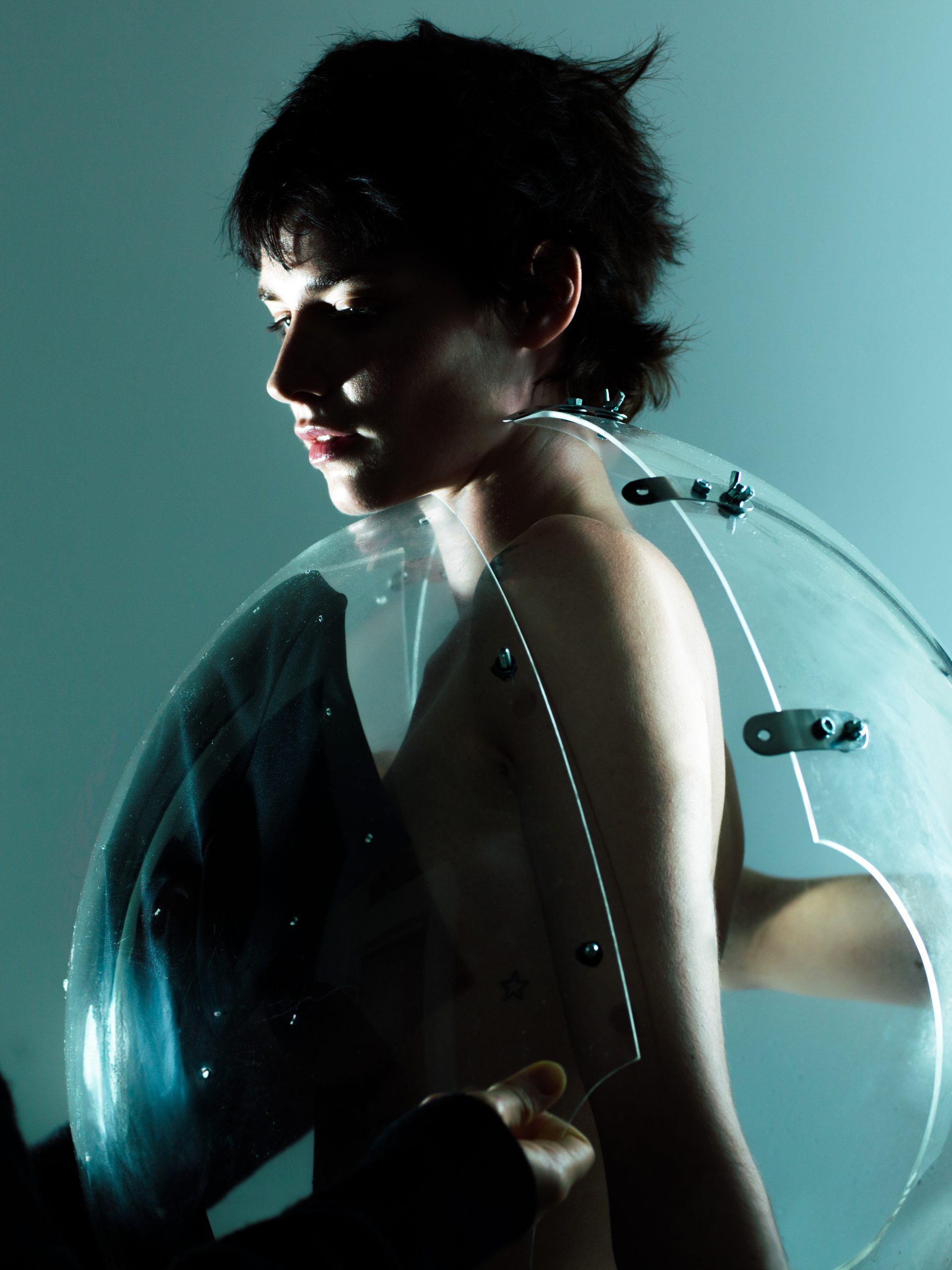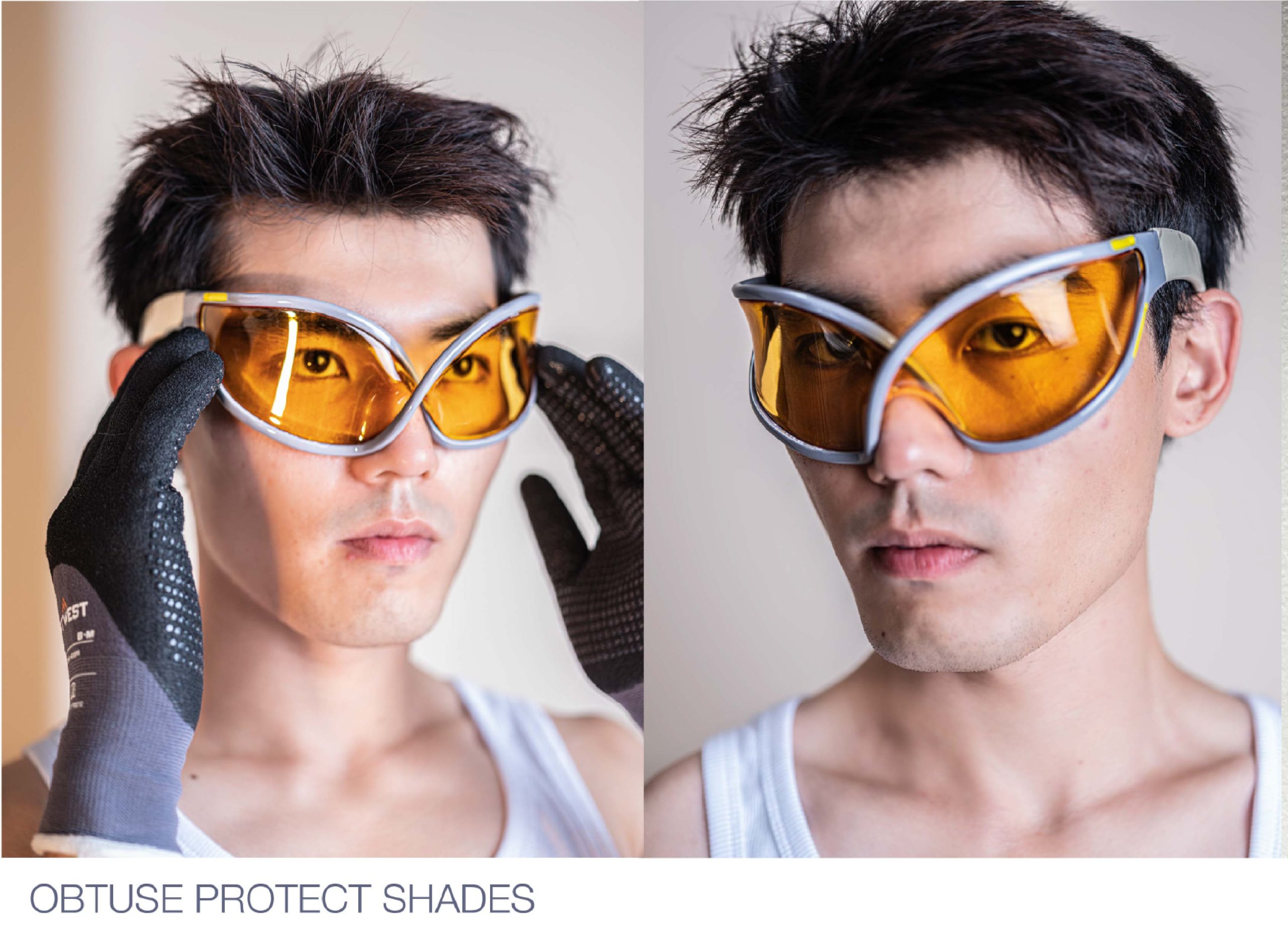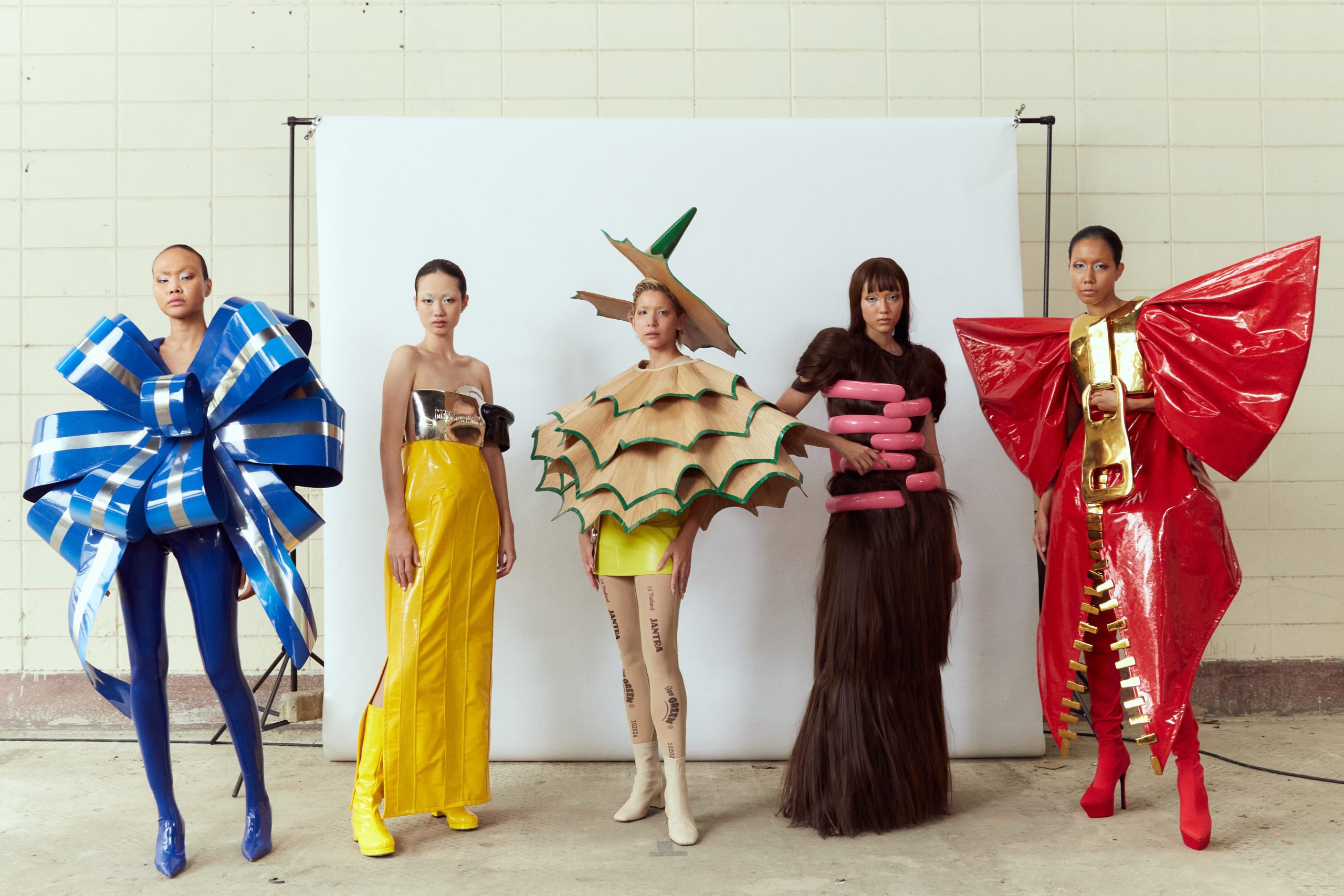Modular fashion has been slowly creeping into the mainstream over the penultimate years, after infiltrating the runway space. Whilst the concept of multi-wear fashion was initially a brilliant idea, but one that was often poorly executed when it came to high-street fashion, the adaptable capabilities of pieces now for sale are far superior. Modular fashion has developed both rapidly and impressively, able to ditch past labels of being “gimmicky”. Nowadays, it dominates a niche area of stylish practicality, and GLITCH believes it is here to stay.
But, what exactly is this modern jargon, and why is “modular fashion” so important? Essentially, this is the newly coined term for fashion that is intentionally convertible and adaptable, and employs innovative design. Think of puffer coats that can zip apart into gilets, and trousers that button off into shorts. These examples and the idea of velcro, zippers and press-studs – perhaps evoke ugly and uncomfortable outerwear, rather than elicit the sexiness intrinsic to desirable haute couture. However, detachable legs and sleeves are no longer just for the practicality of mountaineers and athletes but are rather an significant new element of everyday fashion, that hopes to compress people’s wardrobes whilst still offering the opportunity of endless styling. And, here at GLITCH, we confidently predict that this trend will flourish as textiles engineering becomes a weightier aspect of design, and sustainability becomes a more nagging factor that influences the way we create.
According to surveys by Mckinsey and Co. “Engagement in sustainability has deepened during the COVID-19 crisis, with European consumers wanting fashion players to act responsibly and consider the social and environmental impacts of their businesses” , and as such perhaps it is the ever-perfect moment for modular fashion to spring to life.
Back in 2021, trend forecaster WGSN identified modular fashion as one of their five key trends for the year, reporting that “This trend is heralding new ways of buying and building value into items, sometimes simply updating or refreshing them, at other times enabling garments or items to traverse seasons or to provide functionality”.
Modular fashion in 2023, further developed, researched and studied, has an even more impressive potential to change the way we design, shop, and wear. It seems logical that if clothing pieces can become endlessly adaptable, transitional, and personalised, the need to buy will become significantly reduced. Different iterations of clothing, revamped for season, weather or preference, will likely become obsolete if WGSN’s predictions are to be true. In this way, the industry will be able to shrink production without capping creativity. In 2023, the platform further identified the “Modular Sneaker” as a key item for the 23023-24 seasons, hinting at how the trend, already developing and expanding, will integrate into all sectors of fashion – accessories and footwear included.
“Transformability is the remedy to address society’s inherent need for newness without the environmental and financial repercussions of fast fashion”
“Just a few SKUs can achieve the look of hundreds”
Christina Senia – Modular Jewellery Entrepreneur
https://senianewyork.com/
GLITCH is excited for the future modular fashion permits – one in which infinitely fewer clothes are created, infinitely fewer clothes are bought, and infinitely less waste is produced. Be that as it may, modular fashion further allows styling and design to remain broad creative spaces, but within an industry that is more clever, tactical and conscious. Utopian, maybe? But this design-focus shift is also quite probable.
“Customers absolutely want modular and convertible products. But sales teams need to help educate the customer on how to style and wear the garment,”
Liza Amlani, principal and founder of the Retail Strategy Group.
Whilst modular fashion is currently in its early stages, and adaptable clothing on general sale to the public is limited to a rather basic selection, we are most definitely creeping up to the starting blocks of a modular fashion boom. Here are some key brands to watch out for who are fashioning the future to be more modular.
FlaviaLaRocca is definitely an admirable fashion house when it comes to offering loveable modular fashion, as they are undeniably raising the bar for consciously created and high-quality wardrobe staples. The collection utilises a sophisticated array of neutral tones that pairs greatly with the adaptable and wearable intention that frames their product line. Their “garments are designed as individual modules that can be matched in limitless combinations through the use of hidden zippers to create dresses, overalls, tops, skirts and more”. And yet, their modelled looks never fail to evoke the sleek suiting and first-rate cuts of lavish trending fashion.
2. Konundrum
Konundurum is a German label brought to life by Central Saint Martins graduate Jan-Phillip Kosfeld and Annika Langhammer. Seeking to solve the conundrum of fashion waste and trend-cycles, Konundrum aims to be “exploratory, adaptive and unrestricted” in its mission and creations. With a focus on outerwear, Konundrum allows consumers to “Build Your Gear”.
Ellyla is a brand bringing modular fashion to the ordinary person. Creating timeless designs that can be modified, transformed and interchanges for occasion or preference, they claim to “create space in your closet, mind, and environment while imbuing your dressing ritual with intention”. At present, the brand sells only an adaptable jumpsuit and maxi dress set… but there is likely more to come.
4. Gauvain
Gauvain is an ultra-modern brand specialising in gorpcore garments and high-tech fabrics hoping to break into the modular fashion space. At present their website hosts the MODUL_4 Jacket – a lightweight outer garment that consists of a two-piece vest and two-piece detachable sleeves which can be personalised, as well as their versatile SQUIRE shield cap. Gauvain aims to “fight against industrial overproduction and to set an example for a change of times”.
5. Buhndi
According to brand Buhndi, Modular fashion “is vital to the fashion industry as it allows for a piece of clothing to have an extended life cycle. You can create not one, but two or more looks from one garment”. Buhndi’s pieces evolve around a so-called base piece, which is developed with “blue-prints” and “add-ons”.
Written by Hebe Street from GLITCH Magazine





